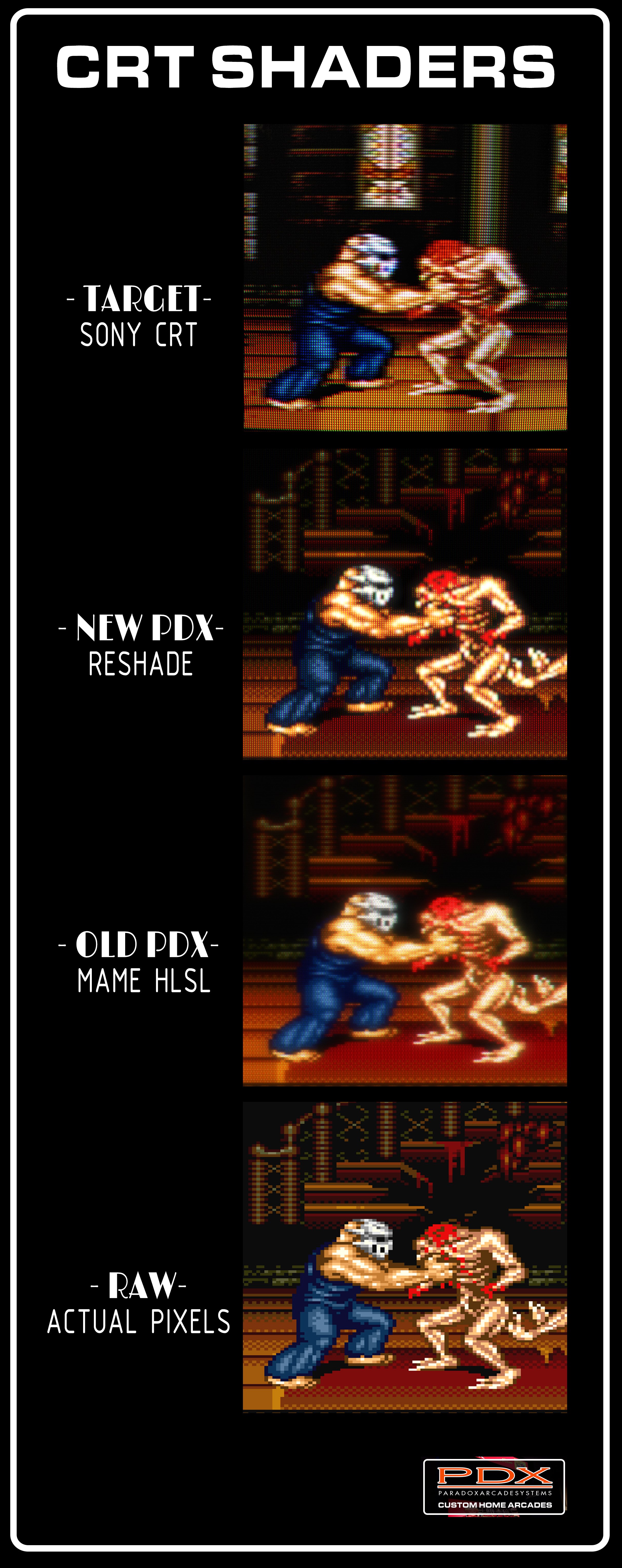MONITORS
30” Main Monitor
Our standard size arcades use 30" 16:10 IPS LCD monitors, RGB factory calibrated and with very low latency. At a 2560x1600 resolution they carry a high pixel density and superior image compared to standard off-the-shelf TVs and the aspect ratio is closer to a 4:3 CRT (details below). These are a popular monitor for professional graphic designers and used in industry settings for their fidelity and performance. If you’d like to change this option to a g-sync monitor for refresh rate advantages we offer a 32” gsync 16:9 option.
43” Main Monitor
Now offering larger 43” 4k screens in our Colossus models! Also further upgradeable to g-sync for ultra-low latency. Our 16:10 30” and standard 43” monitors clock in at 17.28ms input delay. The 43” g-sync upgrade cuts that down to just 6.24ms. Highly playable at either rate but the g-sync comes closer to original CRT input delays. See our store for upgrade details.
Improved geometry on 16:10 fullscreen - round things stay round
43” Monitor has a 34” 4:3 aspect crop when bezels are added. (Most older arcade games used a 19” - 25” 4:3 CRT monitor)
Improved image on pixel art with our shader settings - click for closer look at details
A technical deep-dive...
Let's run down a quick primer about LCD types, aspect ratio, and CRT display effects. Jump below the text to skip the technobabble and see some demo images.
LCD TYPES: There's loads of articles out there comparing the different LCD technologies so you can do a deep-dive on that if you wish. We use IPS panels which provide excellent color and viewing angle (especially important on the wide 4 player arcade controls) at a good price while being far superior to earlier TN/TFT panel.
ASPECT RATIO: Aspect ratio refers to the display width. Arcade games and older TVs had a nearly square appearance at a 4:3 aspect ratio. Using a modern and much wider 16:9 screen means you'll be making some unfavorable changes to the old games, either by stretching them very wide or by adding large bezels, shrinking the gameplay screen. We use a 16:10 for our 30” screen since it's a bit taller, much closer to the original 4:3 aspect ratio of older CRT screens.
CRT and SHADERS: Old arcades and TV sets used a cathode ray tube technology or CRT. Old games look great on them but CRTs are large, heavy, prone to burn-in, and require skilled maintenance. The tradeoff in weight savings means we want to use shaders to restore the original look of old games and mimic a CRT screen. Restoring the softer look that was provided by the CRT technology, shaders offer things like scanlines, phosphor trails, shadowmask, and halation - all properties of CRTs that can be emulated using shaders.
NEW SHADERS
Zoom for detail
Disable or modify shaders using THESE INSTRUCTIONS.




